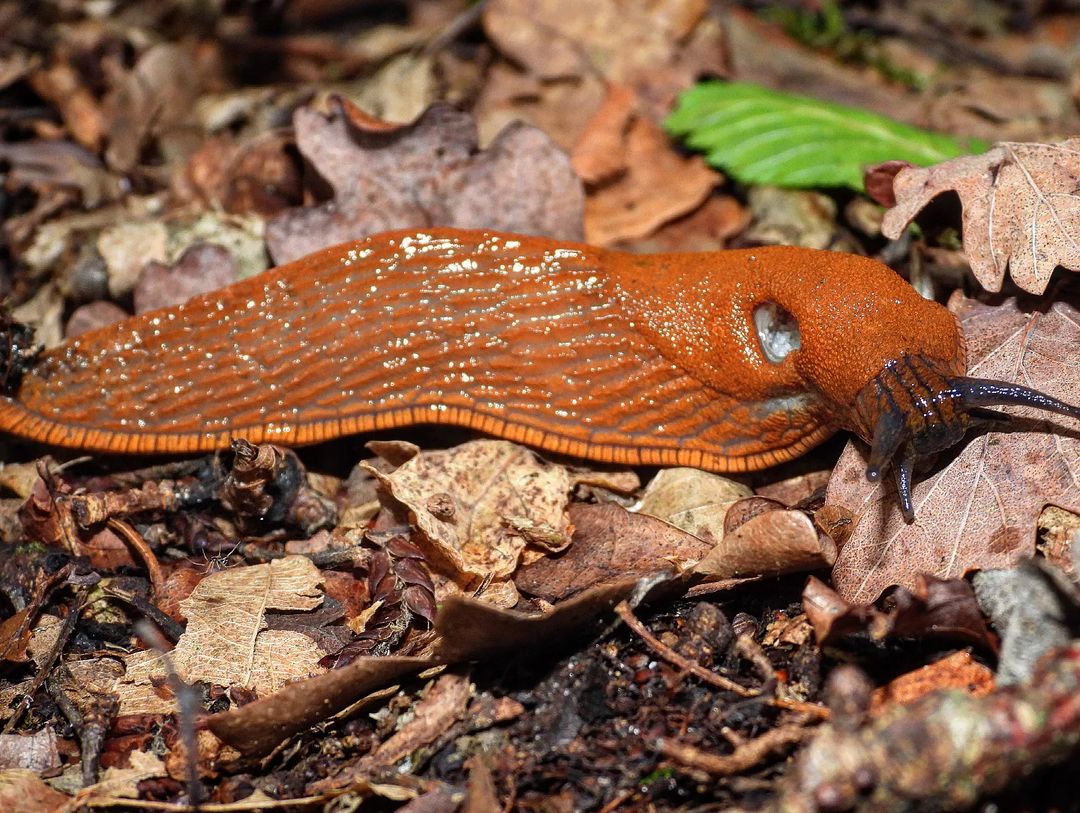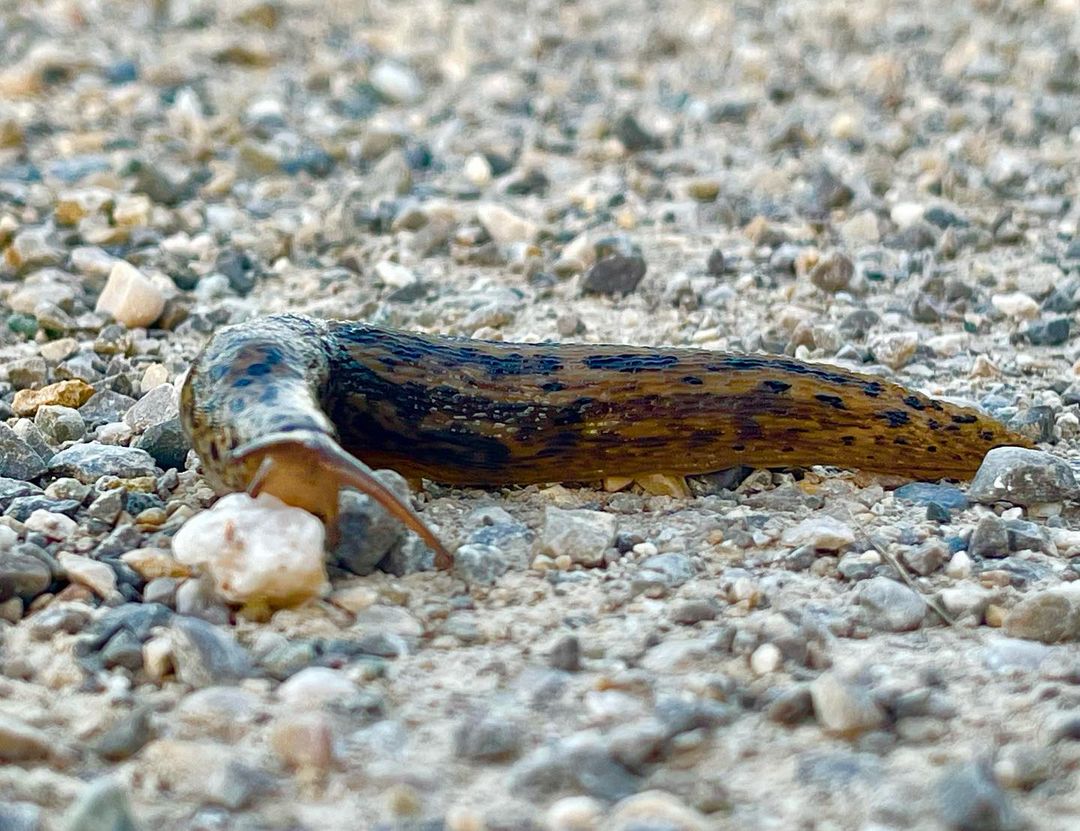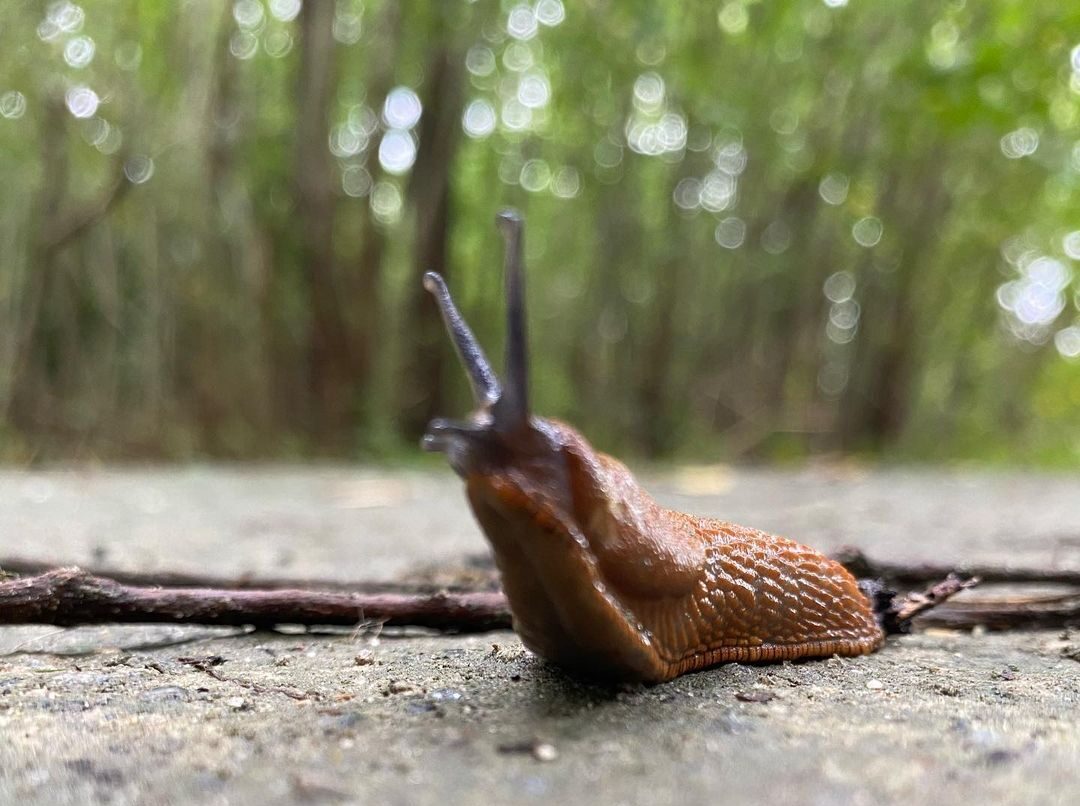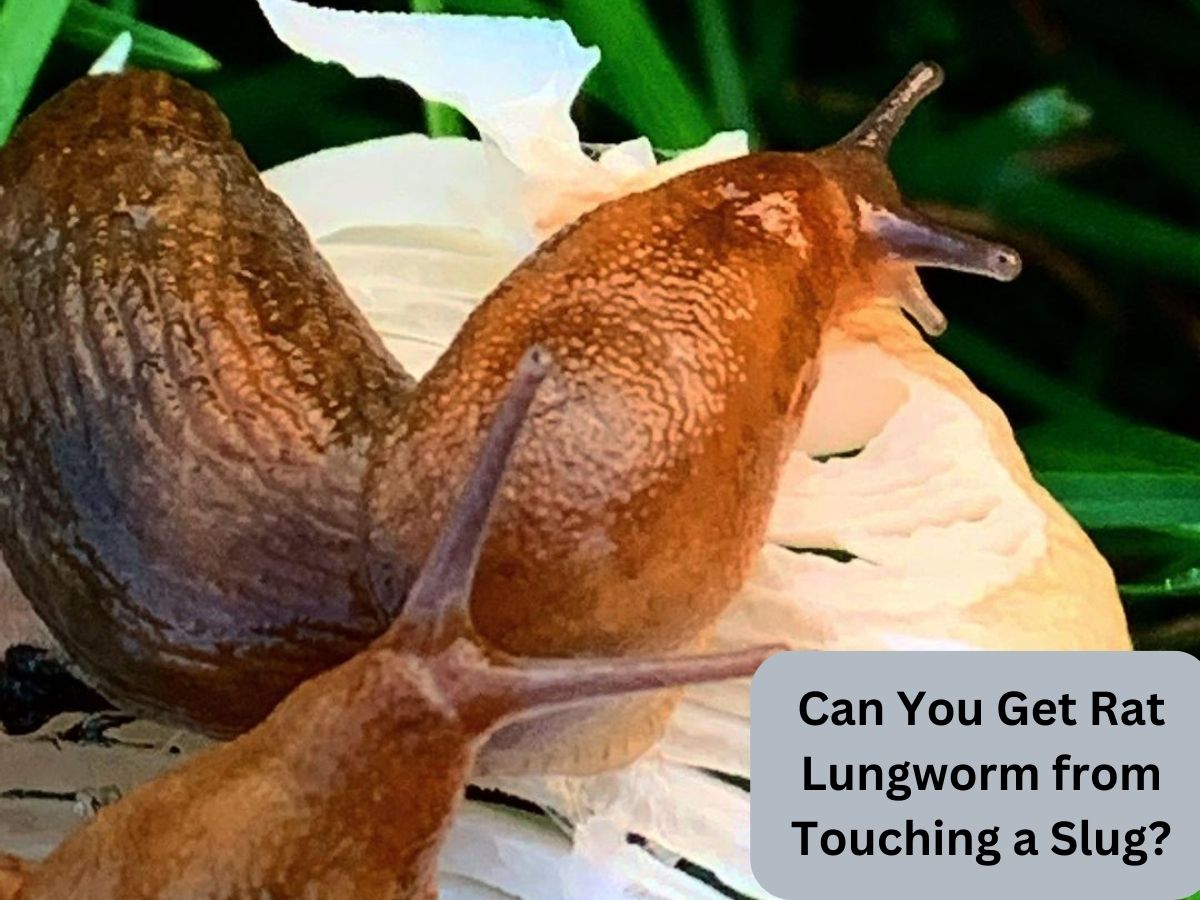Ever wondered if those slimy little garden dwellers, slugs, could put your health at risk? You’re not alone. The topic of whether you can get rat lungworm from touching a slug is not only intriguing but also a source of concern for many.
In a nutshell, the answer is no, you’re not likely to contract rat lungworm from mere contact with a slug. That’s right; you can breathe a sigh of relief if you’ve ever picked up one of these creatures with your bare hands. While the notion might sound unsettling, it’s essential to separate fact from fiction when it comes to this unusual parasite.
Rat lungworm, scientifically known as Angiostrongylus cantonensis, is indeed a parasitic nematode worm, but the risk of getting infected through direct skin contact is minimal. To truly understand the dynamics at play, we need to unravel the parasite’s life cycle, the role slugs play, and the real transmission routes.
So, if you’ve been hesitant to explore your garden or enjoy the great outdoors for fear of rat lungworm lurking on slugs, keep reading. We’re here to demystify the subject, provide you with the facts, and empower you with the knowledge you need to enjoy nature with confidence. Say goodbye to those misconceptions and let’s embark on this enlightening journey together.
What Is Rat Lungworm?
Rat lungworm, scientifically known as Angiostrongylus cantonensis, is a parasitic nematode worm that may sound like it belongs in the realm of science fiction, but it’s very real, and understanding it is crucial. Below, we’ll delve into what rat lungworm is, how it can affect humans, and the health risks associated with it.
Rat lungworm is a tiny, thread-like worm, a nematode, that primarily resides in the pulmonary arteries and heart of rats. However, it can also infect a variety of other hosts, including slugs and snails, which serve as intermediate hosts in its life cycle.
How It Affects Humans:
The concerning part is that rat lungworm doesn’t stop with rats. Humans can become accidental hosts of this parasite, and when that happens, it can lead to a condition known as eosinophilic meningitis or eosinophilic meningoencephalitis.
When humans ingest the larvae of rat lungworm, typically through contaminated food or water, the larvae can travel through the digestive system and eventually reach the central nervous system. It’s here that they cause the most significant problems, as they trigger inflammation in the membranes surrounding the brain and spinal cord. This can result in a range of neurological symptoms.
Common Symptoms and Health Risks:
The symptoms of rat lungworm infection can vary in severity but often include:
- Headaches: Persistent, severe headaches are a hallmark symptom.
- Neck Stiffness: Stiffness in the neck, often accompanied by pain, can occur.
- Nausea and Vomiting: Gastrointestinal symptoms like nausea and vomiting may manifest.
- Fever: In some cases, individuals may experience fever.
- Neurological Issues: In severe cases, rat lungworm infection can lead to neurological problems, including weakness, paralysis, and altered consciousness.
While these symptoms can be uncomfortable, they typically subside on their own with time. However, in more severe cases, rat lungworm infection can lead to complications such as vision problems, weakness, paralysis, and even coma.
It’s essential to seek medical attention if you suspect rat lungworm infection, especially if your symptoms are severe or persistent.
Understanding the potential risks and consequences of rat lungworm infection is vital for taking appropriate precautions and seeking medical help if needed.
Understanding Slugs and Their Role
To comprehend the connection between slugs and rat lungworms, it’s essential to get to know these remarkable creatures and their habitats. In this section, we’ll explore what slugs are, where they thrive, how they can carry rat lungworm larvae, and why they are commonly associated with this parasite.
Slugs are gastropod mollusks belonging to the same family as snails, but with one significant difference – they lack a protective external shell. Their bodies are elongated and soft, covered with a slimy layer that aids in movement.
Slugs are typically found in damp, moist environments, which is why gardens, forests, and other outdoor spaces with ample moisture are ideal habitats for them.
These creatures play a vital role in the ecosystem by breaking down decomposing organic matter, such as fallen leaves and plant debris. While they may not be the most glamorous of creatures, their presence in gardens and natural areas serves to maintain ecological balance.

How Slugs Carry Rat Lungworm Larvae:
Slugs become linked to rat lungworms due to their role as intermediate hosts in the parasite’s life cycle. Here’s how it happens:
- Ingestion of Infective Larvae: Slugs consume rat feces containing rat lungworm larvae, which is a part of their normal feeding behavior.
- Larvae in the Slug’s Body: Once inside the slug’s digestive system, the larvae develop and migrate to various parts of the slug’s body, including its slime.
- Potential for Contamination: The presence of rat lungworm larvae in the slug’s slime can be a source of concern, especially if humans come into contact with it.
Why Slugs Are Commonly Associated with Rat Lungworm:
Slugs are frequently associated with rat lungworm due to their role as a vector in the parasite’s life cycle. This association is reinforced by the fact that slugs are commonly found in areas where the parasite is prevalent.
In regions where rat lungworm is a concern, people may worry about the potential for contamination when slugs are present in gardens or outdoor spaces. While the risk of direct skin contact leading to infection is minimal, the association between slugs and rat lungworm underscores the importance of understanding the actual transmission routes and taking appropriate precautions
Can You Contract Rat Lungworm from Touching a Slug?
Let’s cut straight to the chase and address the central question with confidence: No, you are not likely to contract rat lungworm from simply touching a slug with bare hands. It’s a common concern, but the actual transmission of this parasite to humans follows a different path.
How Rat Lungworm Is Transmitted to Humans:
Rat lungworm, or Angiostrongylus cantonensis, can indeed infect humans, but the primary transmission routes are different from what one might assume. To become infected with rat lungworm, you typically need to ingest the parasite’s larvae, not merely touch a slug.
Here’s how it works:
- Ingestion of Infective Larvae: The primary mode of transmission occurs when humans accidentally ingest the infective larvae of rat lungworm. This can happen through consuming undercooked or raw slugs, snails, or contaminated produce that has come into contact with these mollusks.
- Larvae’s Journey: If infected slugs or snails are ingested, the larvae can make their way through the digestive system, eventually reaching the central nervous system.
- Neurological Impact: Once in the central nervous system, the larvae can lead to eosinophilic meningitis or eosinophilic meningoencephalitis, causing a range of neurological symptoms.
It’s crucial to emphasize that direct skin contact with slugs alone is not a common route for rat lungworm transmission to humans. The larvae are not adapted to penetrate human skin in the same way they can traverse the digestive system.
While it’s natural to feel wary when handling slugs due to their association with rat lungworm, it’s important to understand that the actual risks lie in ingestion, not touch. This knowledge can help you enjoy your outdoor activities, tend to your garden, or simply appreciate nature without undue worry.
In the following sections, we’ll delve deeper into the real risks associated with rat lungworm and explore preventive measures to ensure your safety when encountering these fascinating but misunderstood creatures.

Preventive Measures
Now that we’ve established that the risk of contracting rat lungworm from touching a slug with bare hands is minimal, let’s focus on practical steps you can take to prevent rat lungworm infection through more common transmission routes.
Whether you’re a gardener, nature enthusiast, or simply concerned about your well-being, these preventive measures will help keep you safe.
Safe Food Handling:
- Thorough Cooking: If you intend to consume slugs, snails, or any mollusks, make sure they are cooked thoroughly. Cooking at temperatures above 165°F (74°C) for at least several minutes can kill the larvae and render them harmless.
- Washing Produce: Always wash fruits and vegetables meticulously before eating, especially if you grow your own or source them from places where slugs might be present.
Gardening Precautions:
- Wear Gloves: If you’re an avid gardener, wear gloves when working in your garden. This simple measure can prevent direct contact with slugs or their slime.
- Be Mindful of Tools: Keep an eye on your gardening tools and equipment. If you notice slug or snail residue, clean them thoroughly, and practice good hand hygiene after handling them.
Avoiding Slug Consumption:
- Be Cautious with Raw Snails/Slugs: Refrain from consuming raw or undercooked slugs, snails, or any mollusks, as they can harbor rat lungworm larvae.
Children and Pets:
- Supervise Children: If you have children who enjoy playing outdoors, ensure they understand the importance of not putting slugs or snails in their mouths and washing their hands after handling them.
- Pets: Keep an eye on your pets when they roam outside, as they may encounter slugs or snails. Prevent them from eating these creatures.
Hygiene Practices:
- Handwashing: Practicing good hand hygiene, including thorough handwashing with soap and water after outdoor activities, can minimize the risk of infection.
By following these preventive measures, you can significantly reduce the risk of rat lungworm infection and enjoy the beauty of nature without undue worry.
Remember that the transmission of rat lungworm is relatively rare, and with a bit of knowledge and caution, you can savor the outdoors safely.
Is it safe to eat produce from a garden where slugs are present?
Yes, it is generally safe to eat produce from a garden where slugs are present, as long as you follow proper food handling and washing practices.
Slugs, by themselves, do not make the produce unsafe to eat. However, it’s essential to take a few precautions to minimize any potential risk associated with slug presence:
- Thorough Washing: Before consuming any produce from your garden, ensure that you wash it thoroughly. Use clean water and a brush if needed to remove any dirt, debris, or potential slug residue.
- Inspect Carefully: Examine the produce for any signs of slug damage or slime trails. If you see any, simply remove or cut away the affected areas before consuming.
- Cooking: Cooking vegetables and fruits can further reduce any risk. Most parasites, including the rat lungworm, are killed when exposed to high temperatures. Ensure that you cook your produce adequately, especially if it’s part of a recipe that involves heating.
- Avoid Raw Consumption: If you have concerns about slug presence, you can opt to avoid consuming raw produce from your garden. Cooking effectively eliminates any potential risk associated with slug contact.
By practicing these simple and sensible precautions, you can enjoy the fruits (and vegetables) of your garden without compromising your safety. Slug presence, while not ideal, should not deter you from relishing the freshness and flavor of homegrown produce.
What Should You Do if You Suspect Rat Lungworm Infection?
If you suspect that you or someone you know may have a rat lungworm infection, it’s crucial to take prompt action. While rat lungworm infection is relatively rare, early diagnosis and treatment are essential for a full recovery. Here are the steps to follow if you suspect rat lungworm infection:
Seek Medical Attention Immediately:
The moment you notice symptoms that could be indicative of rat lungworm infection, such as severe headaches, neck stiffness, nausea, or any neurological issues, consult a healthcare professional immediately. Early diagnosis is critical for effective treatment.
Provide a Detailed Medical History:
Be prepared to provide a thorough medical history, including recent travel, outdoor activities, and any potential exposure to slugs, snails, or mollusks. This information will assist healthcare providers in making an accurate diagnosis.
Diagnostic Tests:
Your healthcare provider will likely perform a series of diagnostic tests, which may include blood tests, cerebrospinal fluid analysis, and imaging studies like MRI or CT scans to assess any neurological involvement.
Treatment:
If rat lungworm infection is confirmed, your healthcare provider will prescribe appropriate treatment. Treatment typically involves antiparasitic medications to kill the larvae and reduce inflammation. The specific treatment plan will depend on the severity of the infection and any associated complications.
Supportive Care:
In severe cases, hospitalization and supportive care may be necessary. This can include intravenous fluids, pain management, and treatment for neurological symptoms.
Follow Medical Advice:
It’s essential to follow your healthcare provider’s instructions and complete the prescribed treatment regimen, even if symptoms improve. Failure to do so can lead to a recurrence of the infection.
Prevent Future Infections:
After recovery, take steps to prevent future rat lungworm infections by adhering to safe food handling practices, practicing good hand hygiene after outdoor activities, and avoiding the consumption of raw or undercooked slugs, snails, or mollusks.
Remember that rat lungworm infection is relatively rare, and not every symptom is indicative of this condition. However, early intervention and accurate diagnosis are crucial to ensure the best possible outcome in case of infection.
If you or someone you know experiences symptoms that raise concerns about rat lungworm, do not hesitate to seek medical attention promptly. Your healthcare provider can provide the necessary guidance and treatment to address the situation effectively.

How to Safely Remove Slugs from Your Garden
If you’re dealing with a slug problem in your garden and want to address it without resorting to harmful chemicals, there are several eco-friendly methods you can employ. Here’s how to safely remove slugs from your garden:
- Handpicking: One of the most effective and environmentally friendly ways to control slugs is by handpicking them. Simply go out into your garden in the evening or early morning when slugs are most active, and carefully pick them off plants. Wear gloves if you prefer not to touch them directly.
- Use Slug Traps: Create simple slug traps by placing shallow containers (like saucers or lids) filled with beer or a mixture of water and sugar in your garden. Slugs are attracted to the scent, fall in, and drown. Empty and refill the traps regularly.
- Copper Barriers: Slugs dislike crawling over copper surfaces, as it gives them a mild electric shock. You can place copper tape or strips around the base of plants or garden beds to deter them from reaching your prized vegetation.
- Diatomaceous Earth: Diatomaceous earth is a natural, abrasive powder that can be sprinkled around plants. When slugs come into contact with it, it can damage their soft bodies, discouraging them from crossing the barrier.
- Natural Predators:Encourage natural slug predators in your garden, such as birds, frogs, toads, and ground beetles. Providing habitats for these creatures can help keep the slug population in check.
- Slug-Resistant Plants Choose slug-resistant plant varieties for your garden. These plants often have leaves that are less appealing to slugs or produce natural repellents.
- Garden Hygiene: Keep your garden clean and tidy. Remove debris, mulch, and hiding spots where slugs might take shelter during the day.
- Biological Slug Control: Consider introducing nematodes (tiny parasitic worms) that specifically target slugs. These nematodes can be applied to your garden soil to help control the slug population.
- Rotate Plantings: Rotate your garden plantings to disrupt the slugs’ habitat and feeding patterns. This can help reduce their numbers over time.
Remember that slug control is an ongoing process, and you may need to employ multiple methods to effectively manage them in your garden. By using these eco-friendly approaches, you can maintain a healthy garden while minimizing harm to the environment.
